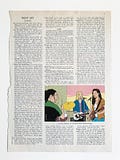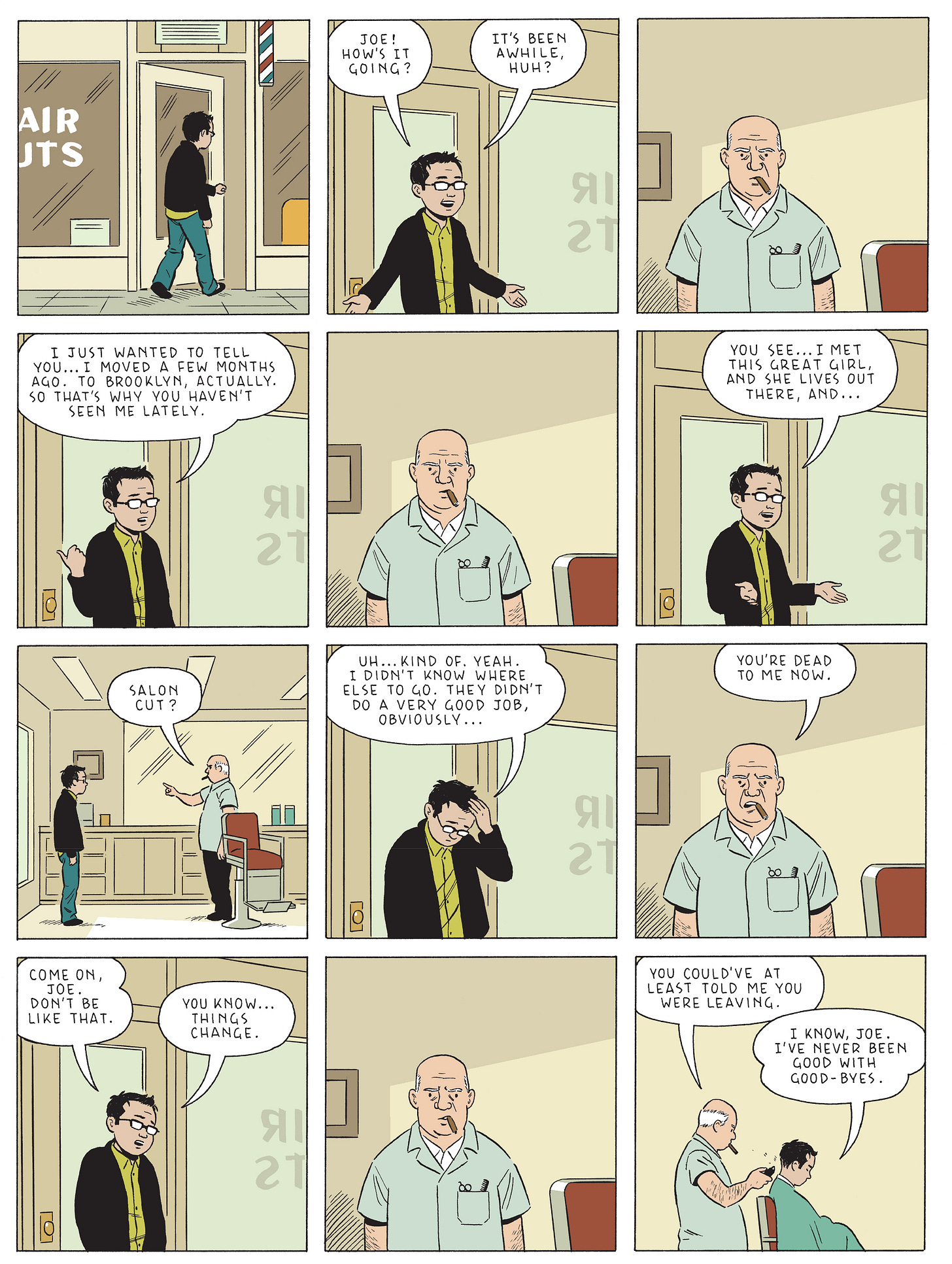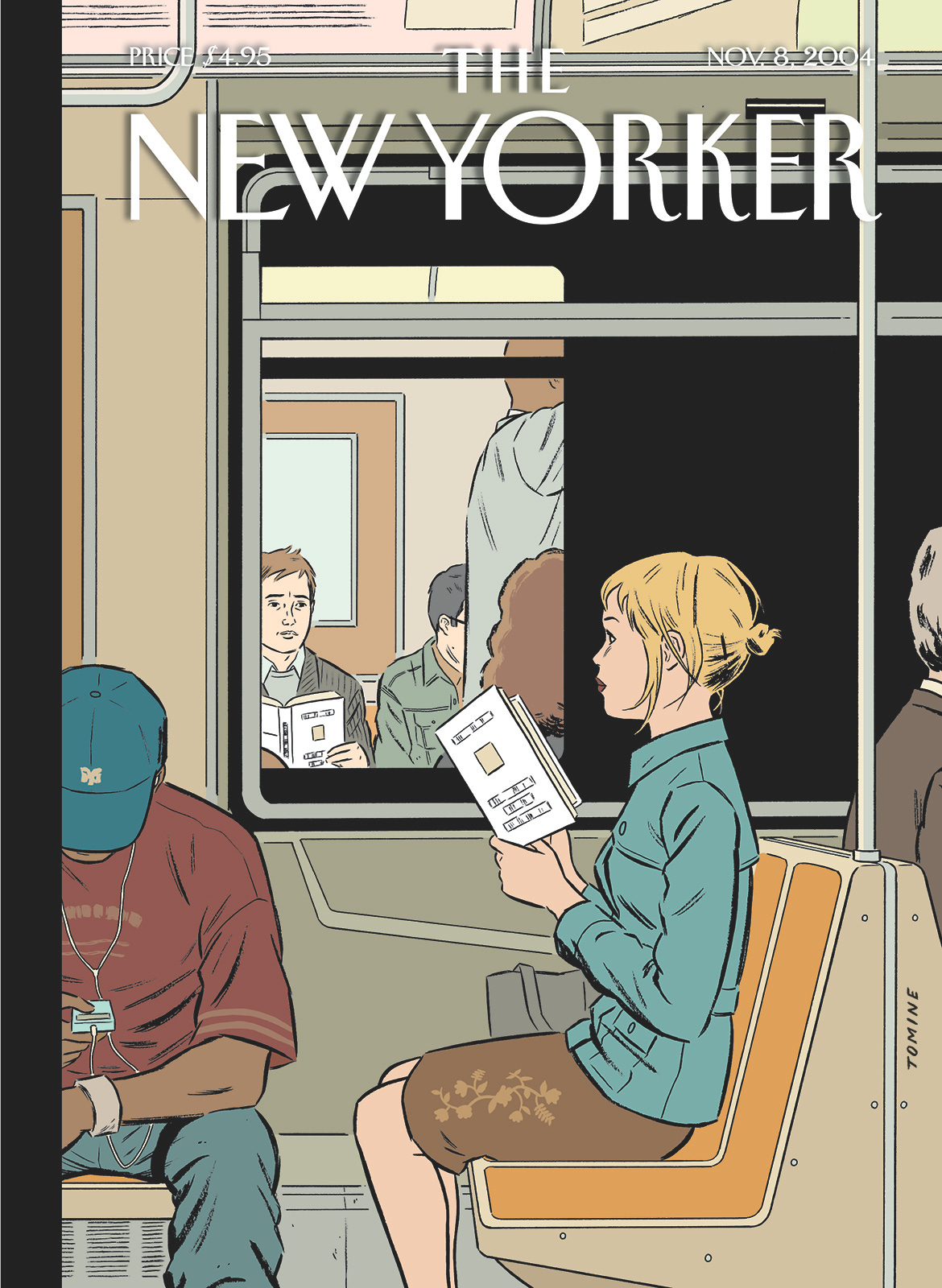Q: Can I ask how you got started at The New Yorker? I’m a long-time reader and have always been curious how one gets their work onto those pages.
I’m happy to respond to this one, but I’m afraid my answer will contain very little in the way of useful information for someone hoping to find employment with The New Yorker now. The reason for this is that I started working for the magazine a long time ago, and almost every aspect of this story is now anachronistic, obsolete, or basically impossible. Also, I was an idiot who got a lucky break, and there’s no way to be instructive in that regard. So please take this anecdote as a quaint glimpse of both my hubris and a bygone era, and not as any kind of guide to getting work at the magazine in the present day.
I didn’t grow up with any connection to The New Yorker. Surprisingly, it wasn’t exactly ubiquitous at the time in Fresno or Sacramento, and it certainly wasn’t a fixture on my family’s coffee table. (We were more of a Nichi Bei Times and Sunset family.) I only became aware of The New Yorker in my teens and early twenties—mostly through my budding interest in people like J.D. Salinger, Charles Addams, and Peter Arno—and it was probably several years later before I actually started reading it. But I soon became obsessed with the magazine, both in it’s present-day form and as a historical record of art and writing by a seemingly infinite roster of geniuses. And naturally, being the deluded, arrogant, ambitious striver that I was, I immediately thought, “I think I’d like to be a part of that!”
In 1999, I was living in Berkeley, California, and I had been working professionally as a cartoonist and illustrator for a few years, but mostly at a level that could be best described as “niche.” It was around this time that I traveled to New York to visit a friend and spontaneously decided to “submit my portfolio” to The New Yorker. I had read about artists doing that in the old days, but I wasn’t sure if it was something that people still did, and I had absolutely no idea how to go about doing it. But I had the cocky self-assurance of a 25-year-old who had already received some over-inflated approbation for his work, and that was only bolstered by the “what have I got to lose?” attitude that comes from being in a big city far from home for a few days.
The first step was assembling this so-called “portfolio.” I had brought a stack of tear sheets (samples of published work, typically from magazines), but no portfolio. I had heard that some people presented their work in real portfolios—like, leather satchels with handles and flippable display pages—but when I went to the art store and saw how much they cost, I decided against that. (It didn’t occur to me that I might be able to retrieve the portfolio after submitting it.) So instead I went to a stationery store and bought a glossy, white, two-pocket school folder. I stuffed the tear sheets into the folder, and I wrote my name, phone number, and fax number on the front with a Sharpie. It looked like an elementary school homework assignment, and somehow I convinced myself that this was an acceptable way to present my work to one of the greatest magazines of all time.
The next step was finding out where the offices of The New Yorker were located. So, as one did back then, I opened up the phone book. I can’t remember if I called The New Yorker and asked for their address, or if it was actually listed in the White Pages. But I eventually found it: 20 West Forty-third Street.
I rode the subway down there, found the building, and walked right in. I might be mistaken, but I have no memory of any kind of security check. I took the elevator up to The New Yorker offices, entered, and bluntly asked the receptionist, “Can I leave a portfolio?” The receptionist looked me over, probably appalled by my brashness, and responded simply, “You...can.” He stretched the word “can” into two syllables, pronouncing it with a lilt that implied that, technically, it was indeed physically possible for me to leave a portfolio.
At that moment I felt overwhelmed with embarrassment. Suddenly the history and dignity of my surroundings registered with me, and I felt like a small, impudent child. I pulled the stupid-looking folder out of my backpack, placed it on the reception counter, and quickly fled.
In the days that followed, I didn’t think about my visit to The New Yorker at all. Instead I filed it away in a corner of my brain with all the other cringe-inducing mistakes of my life that I preferred to not remember. I eventually flew back home to Berkeley, and made a point to not tell anyone about that segment of my trip. The last thing I wanted was well-meaning friends and family continuously asking if I’d heard anything from The New Yorker.
But then, about three weeks later, there was a message on my answering machine from someone named Chris Curry at The New Yorker, asking if I was free to do an illustration that week. I played the message back several times, shaking with disbelief. I called back, and with no mention whatsoever of that glossy, white, two-pocket school folder, accepted my first assignment from The New Yorker. It was a small portrait of the band Luscious Jackson.
This was one of the biggest breaks of my career—clearly the result of a generous art director giving an unproven novice a chance—and I choked. I was so overwhelmed by the significance of this one little drawing that I wound up in that illustrator’s nightmare zone where the rough sketch looks infinitely better than the finished drawing, but it’s literally impossible to figure out why. (Looking at it now, I can immediately point to one glaring flaw: the bizarrely tiny hands.) More than anything, I knew I couldn’t blow the deadline, so I forged ahead, adding a palette of colors that only made things worse. If Luscious Jackson still exists, I hereby apologize for allowing my anxiety to tarnish your spotlight moment in The New Yorker.
Maybe the illustration wasn’t actually that bad. Or, more likely, that generous art director was even more generous than I thought. In any case, Chris kept calling me, offering me larger, more consequential assignments, and we began to develop a friendly, highly-efficient working relationship. On one occasion, due to some sort of tech-related conundrum that prevented me from transmitting a sketch to her, I described a revision over the phone, and she said, “Okay, I trust you.”
I also began receiving assignments from another art director named Owen Phillips. He gave me my first ongoing “gig”: three small images every month for the “Goings on About Town” section. It was a great assignment that not only pushed me to create images outside of my comfort zone, but also provided me with a dependable source of income right as I took the leap and moved to New York. Owen was also adamant about getting my comics into the pages of the magazine, and it was with his help that this occurred for the first time, with a piece entitled “My Ex-Barber.”
In 2004, The New Yorker’s arts editor, Françoise Mouly, reached out to me and asked if I’d be interested in drawing a cover. True to form, I sabotaged this incredible opportunity by saying “yes,” and then failing to submit any ideas. For a long time. Once again, I was intimidated and overwhelmed to the point of paralysis. But instead of throwing up her hands and rightfully scratching me off her list, Françoise worked with me. She took an unreasonable amount of time to walk me through the process, to encourage and advise me, and to finally apply a little “tough love” and insist that I submit some sketches by a certain date. My first cover appeared on the magazine on November 8, 2004.
I’ve done around twenty more since then, and none of them would exist without Françoise’s insight, guidance, and collaborative spirit.
It’s been twenty-two years since that drawing of Luscious Jackson appeared in The New Yorker, and I’ve drawn around 150 covers, comics, and illustrations for the magazine since then. It’s hard for me to get my head around the fact that I’ve been doing this for almost half my life. Recently, I’ve produced work for them with less frequency because I’ve been engulfed in several unpredictable long-term projects, and I’m often unable to meet the deadlines of a weekly publication. But it’s still my favorite magazine and my favorite place to freelance, and every time my artwork appears in its pages, I still have a flash of the exhilarating discomfort I felt when I placed that glossy, white, two-pocket school folder on the reception desk and pretended like I didn’t care if anything came of it.






I am proud to say that I’m the owner of the original art for the Luscious Jackson piece! I purchased it from you at San Diego Comic Con many years ago. I had been a fan of yours since the mini comic/Tower Records days. During college, I went to a Luscious Jackson concert at SDSU with my then friend/co-worker and her sister. That friendship evolved soon thereafter and she became the love of my life and the incredible mother to my children. Needless to say, this piece holds a very special place in our hearts. Thank you, Adrian!
I would argue that this is instructive at least in spirit. But I think you kinda knew that :)